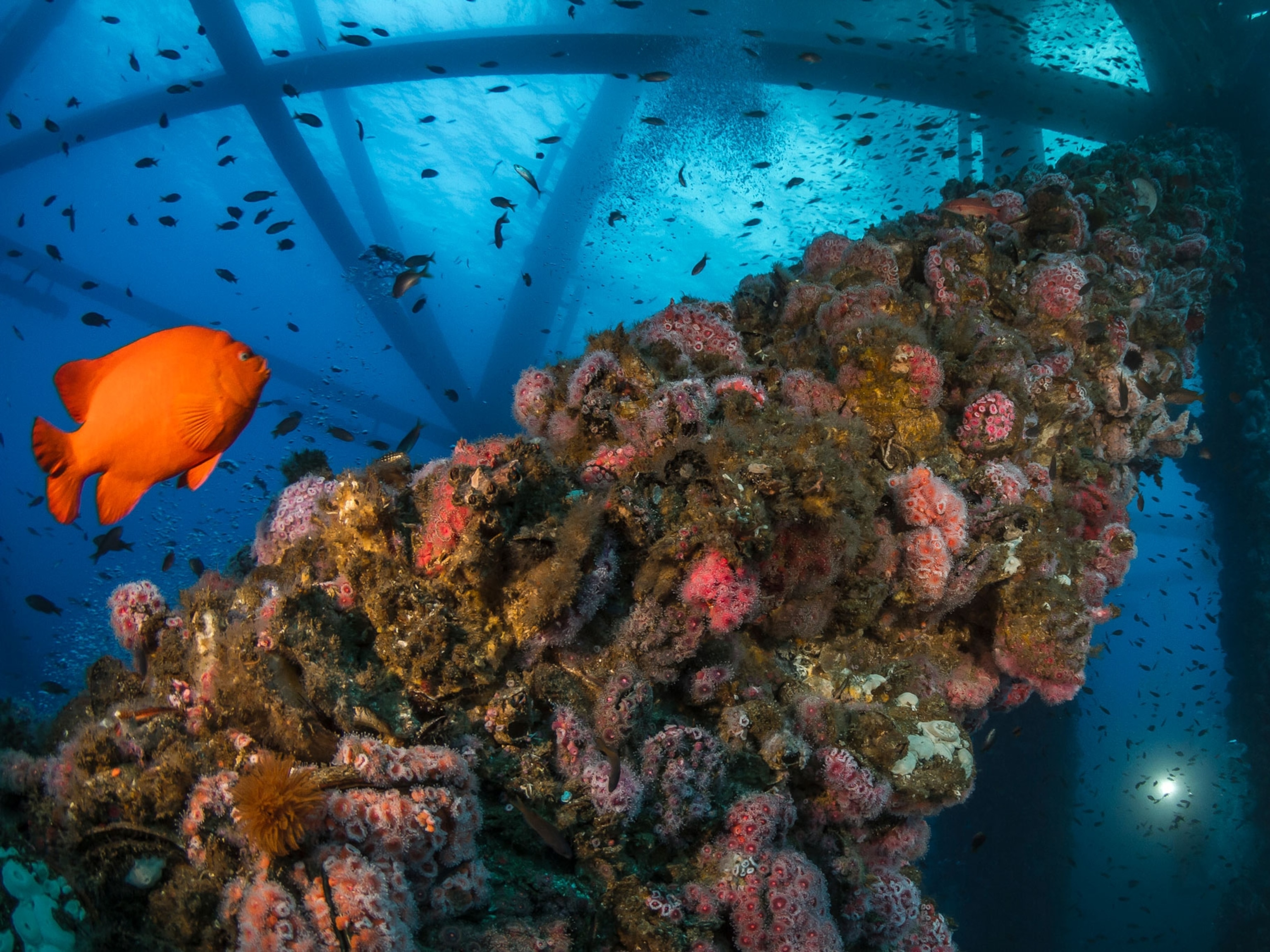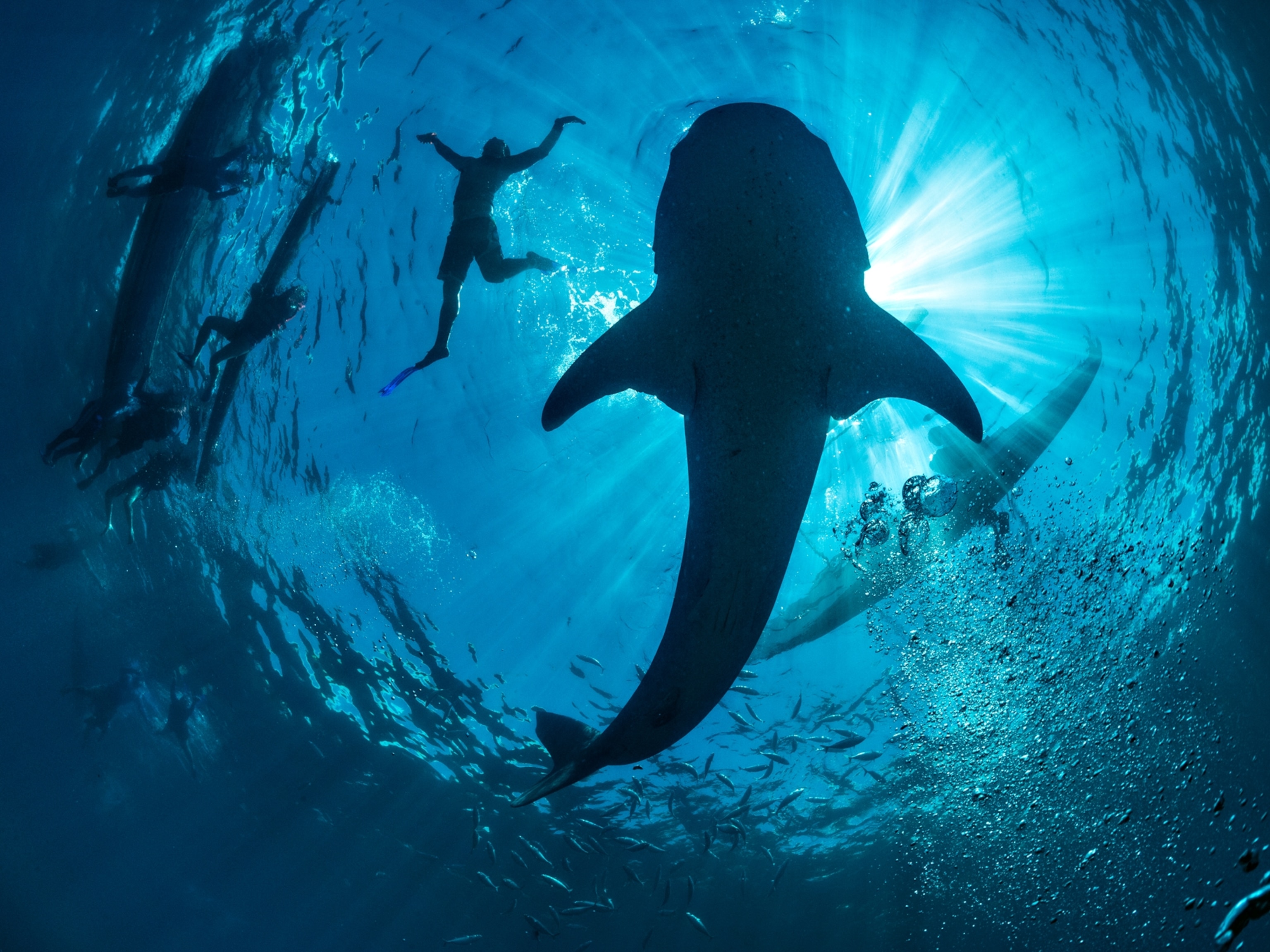
Largest marine protected area in Atlantic Ocean will soon be official
The tiny island is the summit of a vast underwater mountain range that houses a rich diversity of species.
The nearly 170,000 square miles of ocean around Ascension Island, one of the world’s most pristine and biodiverse ocean ecosystems, will soon be officially protected.
From the surface, Ascension Island—a tiny volcanic outpost in the middle of the Atlantic Ocean between Brazil and the west coast of Africa—looks remote and isolated.
But the small island is perched on the summit of a 10,000-foot underwater volcano in the mid-Atlantic ridge, one of the world’s longest mountain ranges.
On August 24, the Ascension Island government announced plans to turn its national waters into a marine protected area, and today, the U.K. government announced plans to set aside 7 million pounds ($8.5 million) for marine conservation.
A portion of that money is expected to go toward maintaining the Ascension Island MPA, which costs an estimated 150,000 pounds per year to maintain. The total protected area is nearly twice the size of the entire U.K. and larger than the state of California.
(This is how Ascension Island could help us colonize other planets.)
The U.K. government has not yet provided a breakdown of what the budget will be, and the MPA will not officially go into effect until it does. (A response from the U.K. government had not been provided by the time of this article’s publication.)
“We’re 90 percent there,” says Adrian Gahan, policy director for the Blue Marine Foundation. The group also worked with National Geographic Society’s Pristine Seas project, an initiative to protected 20 of the ocean's wildest places by 2020. Ascension Island will be the 22nd marine reserve Pristine Seas has helped create.
“The local community has asked for it. The U.K. government in principle has said they’ll pay for it. The technology is available. All that’s left is for the U.K. government to put in writing a commitment to fund the MPA,” he says.
What are they trying to protect?
In question is a vast underwater deep-sea ecosystem with a rich abundance of marine species.

A 2017 Pristine Seas expedition to assess the species richness of the Ascension Island national waters left expedition leader Paul Rose so in awe he could barely decide which species to list off first. Rarely seen sharks, migratory tuna, and then undiscovered species of plankton were all spotted.
“It’s unbelievably beautiful,” he says, “and the abundance of marine life is just amazing.”
To be out at sea and know a vast mountain range lurks below, “feels energetic, beautiful, and powerful,” he adds.
The new MPA will close the area off from commercial fishing and extractive mining industries. Experts say MPAs help keep essential fish populations well stocked. They can lead to what’s called a “spillover effect,” in which thriving fish numbers inside an MPA lead to more abundant fisheries in regions where commercial fishing is legal.
“There’s no doubt—for humans to survive, we’re going to continue to want and need protein from the sea,” says Rose. “Marine protected areas mean more fish for everybody.”
Park on paper and in practice
The U.K. government is advocating for 30 percent of the world’s oceans to be protected by 2030, and the UN is fast approaching its deadline to protect 10 percent of the world’s oceans by 2020.

Marine protected areas have previously faced criticism for being what are called “paper parks,” declared on paper but not actually monitored or enforced.
Gahan is optimistic that the Ascension MPA can be a model for successful marine conservation, in part because the reserve was negotiated with buy-in from local residents. The island is home to under 1,000 people, most of whom work on the island’s military base or local commerce. No indigenous populations are present.
The MPA will be enforced largely with satellite monitoring.
“Many years ago, the only way we could monitor illegal activity was spotter aircraft or fishery patrol vessels,” says Rose. “Now we do have very effective satellite monitoring.”
The 150,000 pounds needed to maintain the MPA each year will go toward a small monitoring staff, patrol vessel, and patrol trips.
“If the U.K. government fails to pay, it will fall into being a paper park quite quickly. You wouldn’t have the staff, and the boat, and the infrastructure to enforce it,” cautions Gahan.
You May Also Like
Go Further
Animals
- This ‘saber-toothed’ salmon wasn’t quite what we thoughtThis ‘saber-toothed’ salmon wasn’t quite what we thought
- Why this rhino-zebra friendship makes perfect senseWhy this rhino-zebra friendship makes perfect sense
- When did bioluminescence evolve? It’s older than we thought.When did bioluminescence evolve? It’s older than we thought.
- Soy, skim … spider. Are any of these technically milk?Soy, skim … spider. Are any of these technically milk?
- This pristine piece of the Amazon shows nature’s resilienceThis pristine piece of the Amazon shows nature’s resilience
Environment
- This pristine piece of the Amazon shows nature’s resilienceThis pristine piece of the Amazon shows nature’s resilience
- Listen to 30 years of climate change transformed into haunting musicListen to 30 years of climate change transformed into haunting music
- This ancient society tried to stop El Niño—with child sacrificeThis ancient society tried to stop El Niño—with child sacrifice
- U.S. plans to clean its drinking water. What does that mean?U.S. plans to clean its drinking water. What does that mean?
History & Culture
- Meet the original members of the tortured poets departmentMeet the original members of the tortured poets department
- Séances at the White House? Why these first ladies turned to the occultSéances at the White House? Why these first ladies turned to the occult
- Gambling is everywhere now. When is that a problem?Gambling is everywhere now. When is that a problem?
- Beauty is pain—at least it was in 17th-century SpainBeauty is pain—at least it was in 17th-century Spain
- The real spies who inspired ‘The Ministry of Ungentlemanly Warfare’The real spies who inspired ‘The Ministry of Ungentlemanly Warfare’
Science
- Here's how astronomers found one of the rarest phenomenons in spaceHere's how astronomers found one of the rarest phenomenons in space
- Not an extrovert or introvert? There’s a word for that.Not an extrovert or introvert? There’s a word for that.
- NASA has a plan to clean up space junk—but is going green enough?NASA has a plan to clean up space junk—but is going green enough?
- Soy, skim … spider. Are any of these technically milk?Soy, skim … spider. Are any of these technically milk?
- Can aspirin help protect against colorectal cancers?Can aspirin help protect against colorectal cancers?
Travel
- What it's like to hike the Camino del Mayab in MexicoWhat it's like to hike the Camino del Mayab in Mexico
- Is this small English town Yorkshire's culinary capital?Is this small English town Yorkshire's culinary capital?
- This chef is taking Indian cuisine in a bold new directionThis chef is taking Indian cuisine in a bold new direction
- Follow in the footsteps of Robin Hood in Sherwood ForestFollow in the footsteps of Robin Hood in Sherwood Forest




